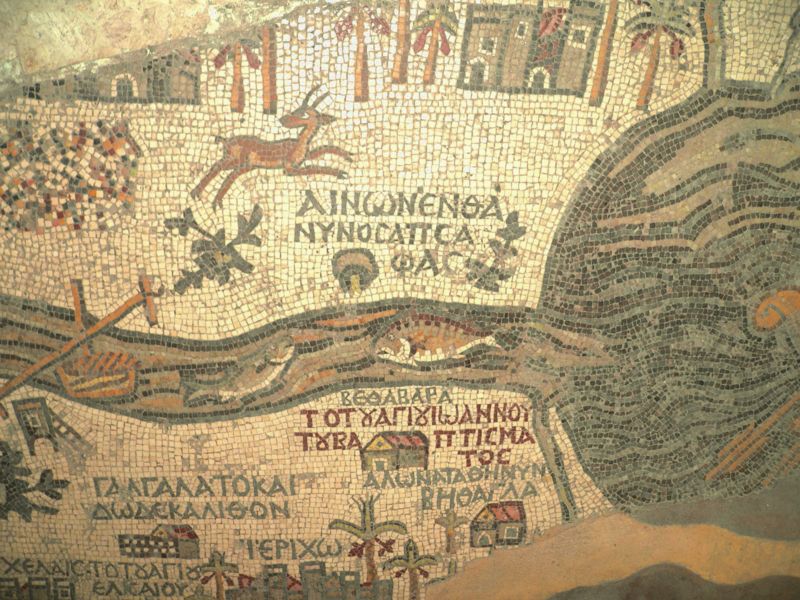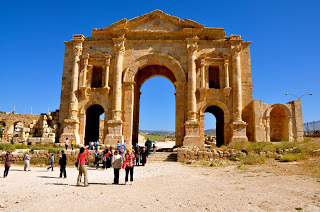Recently I was fortunate enough to get the opportunity to visit Jordan and while I had some knowledge of the country before I went, I was still amazed to discover just how rich and varied its history is. Jordan has been home to a variety of civilizations stretching back thousands of years and it was once a crossroad of the most important trade routes in the world.
Additionally, the world’s three major religions, Christianity, Islam, and Judaism, each have important sites located within the country’s borders. All of this can make for an incredibly humbling experience for travelers, who often feel like they’re truly walking in the footsteps of history.
Of course, the most famous reminder of Jordan’s past is undoubtedly Petra, the ancient city built by the Nabateans in the 6th century BC. The place is a UNESCO World Heritage Site and it is truly unlike any other place on Earth.
Carved directly from the rose red rock common in southern Jordan, Petra served as the capital for the industrious Nabateans who used skill and foresight to divert merchant caravans to the region, turning it into a center for trade and mercantilism. During that era the kingdom became rich and influential, until catching the attention of the Romans, who later conquered the Nabateans, altering the trade routes once again.
There is much to tell about Petra. So much so that it will receive its own post in the very near future. But in the context of this story, just know that it is one of many amazing historical sites that help to tell the rich story of Jordan and its colorful past. But it is also just one of many wonderfully preserved historical sites that dot the landscape, telling a tale that spans across millennia.
One of those sites is found in a town called Jarash which is located in northern Jordan, a short drive from the capital of Amman. Modern Jarash is a small, thriving city with a vibrant population that is not unlike many others in Jordan. Except at the heart of Jarash is an ancient secret – a Greco-Roman city that is amongst the best preserved in the entire world.

Some of the highlights in Jaresh include the spectacular Hadrian’s Arch, which was built around 130 AD to celebrate the visit of the Emperor Hadrian himself. The arch still serves as the main entryway to the site, which also features a well preserved Roman theater, temples devoted to Zeus and Artemis, an intricate nymphaeum and several roads lined with pillars. It is an impressive site to say the least and one could make a case that the city belongs on UNESCO’s list as well.
Sharp eyed readers may have noticed that the temples I alluded to above were named for Zeus and Artemis, which are decidedly not Roman gods. Those names are an indication that ancient city of Gerasa, as Jarash was known two thousand years ago, was first influenced by the Greeks.
The wealthy and influential patrons that lived in the region at the time were not quick to give up their traditions, even as the Romans claimed power across much of the known world. While the inhabitants of Gerasa welcomed their inclusion in the Empire, they held on to their past for hundreds of years. Because of this history, visitors to Jarash will discover not just Latin inscriptions around the city, but plenty of Greek as well.
That same Greek and Roman influence can be found in Amman as well, where a large site known as the Citadel dominates a prominent hill at the center of town. The ruins there include towering Corinthian columns and the remains of a temple that is believed to have been dedicated to Hercules.
A massive stone hand is all that remains of the statue that once stood guard over that place, but it does offer clues of the former grandeur of the place. A small museum also offers glimpses of Jordan’s past in the form of artifacts collected from across the country.

Skip over to the town of Madaba, and an entirely different historical era opens itself up for display. Madaba is home to some of the best preserved mosaics from the Byzantine period including a massive map of the Holy Land that dates back to the 6th century AD.
The map spreads out across the floor of the Church of St. George and depicts such important sites as Jerusalem, Bethlehem, the Dead Sea and the River Jordan. It is one of the earliest known maps of its kind and the hand crafted mosaic is a work of art in its own right.
Jordan’s connection to the Holy Land runs far deeper than an ancient map on the floor of a church however. Some of the most important religious sites in the world are located within its borders and Christians, Jews and Muslims alike all make pilgrimages to visit those places.
For instance, Mt. Nebo is believed to be the site where Moses looked upon the Holy Land, which he was foretold that he would see but never enter. On a clear day visitors to the summit can catch a glimpse of Jericho, the West Bank, and even Jerusalem itself. The River Jordan cuts a swath across the arid valley floor, which sits some 817 meters (2680 ft) below and the view from the top is most definitely worth the short hike.
Speaking of the River Jordan, a visit to its banks can yield a host of great religious and historical sites as well. Visitors to Bethany Beyond the Jordan for instance will discover not only the Spring of John the Baptist but also the site where he baptized Jesus Christ. For many, this is the literal birthplace of Christianity itself.
It is also possible to walk down the banks of the river itself, which is a rather underwhelming waterway until you take into account the numerous references in religious texts. There is a reason why many of the world’s different religious sects have built churches, temples and mosques along its banks.
If you’re a traveler who loves history and culture, then Jordan has plenty to offer. The sites that I named here will fill up many days of travel on their own, particularly if you stop and take some time to reflect on their importance and meaning. Understanding the influence of Jordan’s past gives us a better connection to its present and I count myself lucky that I had the chance to experience that history first hand.
- Gear Review: The Xero Scrambler Mid is an Ultralight Hiking Shoe for Spring - March 1, 2023
- Gear Review: Yeti Roadie 48 Wheeled Cooler - August 18, 2022
- Kristin Harila Continues Pursuit of 8000-Meter Speed Record - August 16, 2022

What absolutely amazing history this all would have!
To adventure is one wonderful thing, to do so among such ancient places is another whole level…
D
It was definitely an amazing experience D. Very humbling to think about all of that history.
I also left a few stones behind while I was there as well. 🙂
Kraig, I've been reading through your blog recently, great stuff. This piece on Jordan was particularly fascinating. I've started a website devoted to adventure, and would love to share some of your stories there. It's at http://www.ExpeditionUnderground.com Please let me know if that's something you would be interested in.
-Marty Brodsky
Smart post admin
I hope to visit my blog and subscribe to me 🙂
Ancient Greece Government and Ancient Greece Food